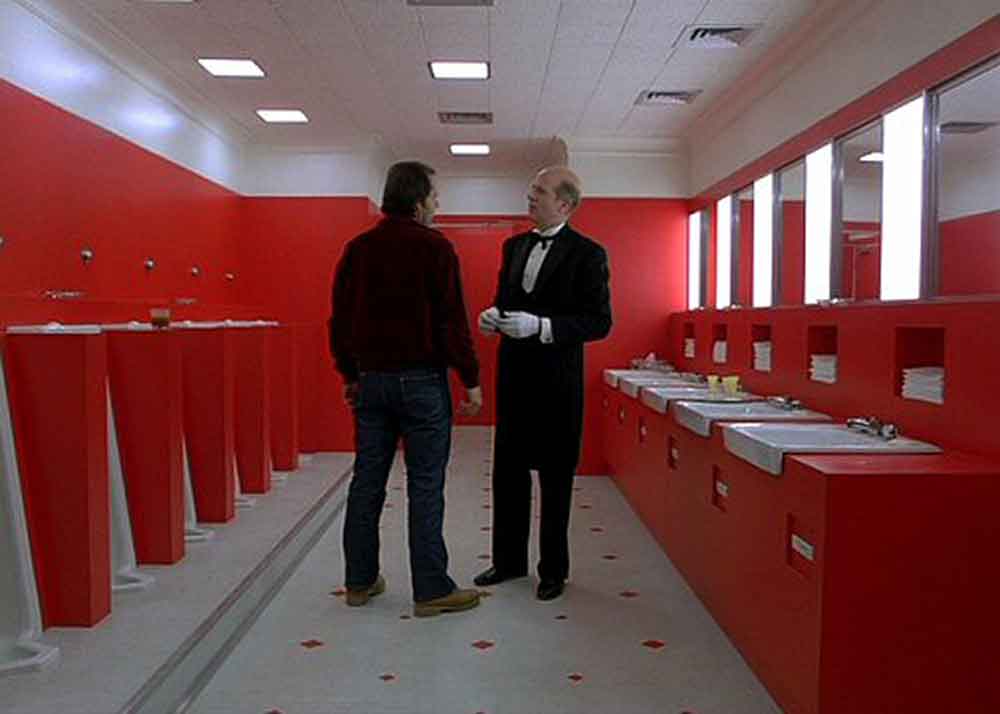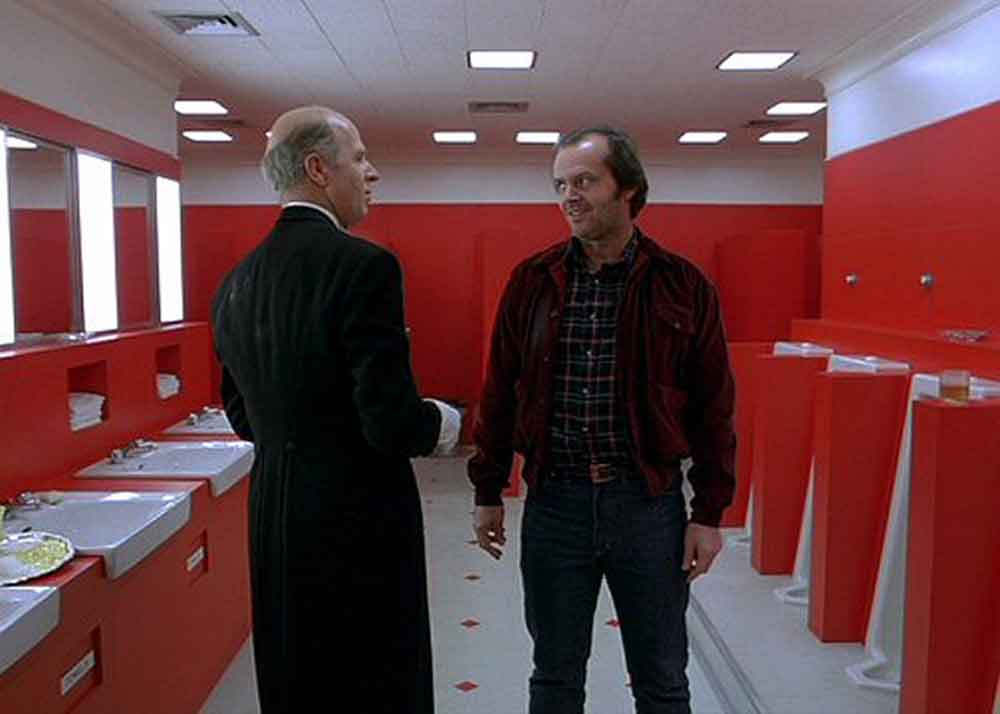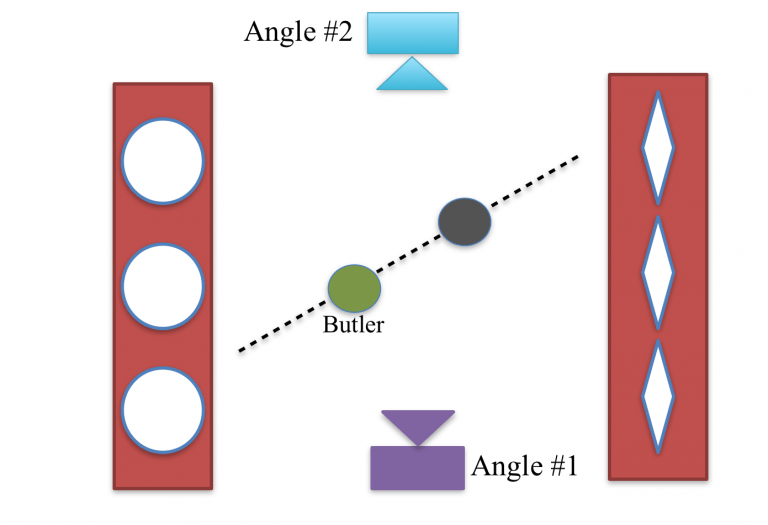The 180-degree rule, sometimes referred to as the invisible axis, is designed to help filmmakers produce sequences that spatially and directionally make sense to the audience.
It can apply to run-and-gun documentary-style shooting, a simple interview or even a heavily choreographed narrative scene with multiple actors.
Let’s break it down.
Think of the 180-degree rule as a semi-circle. The camera safe zone stays on the same side of your subject(s).
This simple model works for sequences with and without movement. Once the line is established, and the subject position within the frame has been created, the rule makes it easier to identify where you can safely place the camera when getting coverage of your scene.
When approaching a location the first thing you’ll want to do is establish frame direction. Communicate with your crew that this is the direction you wish to shoot. The more camera set ups, the harder it can be to maintain the 180-degree line.
Finding it again can be as simple as quickly diagraming out your location as an overhead. Use your crew to explore where you went wrong, as well as referring back to previous shots.
The more subjects you have, the more complicated it can be. The final scene from the Quentin Tarantino film Reservoir Dogs includes five actors in one space all-speaking to each other. The coverage is impeccably done and the line is never crossed, as an audience member there is never a question of where a character is in the scene at a given time. It is great example of a piece that utilizes a “Reverse Cut” the moment after a major turning point in the scene, creating a successful transition in the disturbed world.
Breaking the Rule
Breaking “the line” causes the audiences to believe that a character has magically flipped around from their original position, when in reality they haven’t moved at all. This is called a Reverse Cut. These kinds of cuts disorient the viewer by presenting an opposing viewpoint of the action in the scene and consequently altering the perspective of the action and the spatial orientation in the original shot.
There are times when breaking the line is OK, and those are up to you as the artist. Maybe you want to create confusion for your audience, or show a huge change in mood in the story. Breaking the line can be a fun way to create a jarring affect.

The Shining: Angle number 1.

In The Shining (Angle number 2), Stanley Kubrick shoots wide shots from both directions, a 180-degree flip, crossing the line. Notice how the Butler appears to have jumped to the opposite side of the screen.

At times, your actors/subjects may break the axis themselves. In run-and-gun documentary shooting, this is sometimes unavoidable. Using a tight cutaway that lacks direction or re-establishing a wide shot that preferably shows the axis break are ways in which you can work around accidental breaks.
Here are some other times that the filmmaker crossed the line intentionally to create tension and dramatic effect.
Requiem for a Dream (2000): Darren Aronofsky’s harrowing exploration of addiction frequently breaks the 180-degree rule, particularly during Sarah Goldfarb’s descent into drug abuse. The jarring cuts and erratic camera movements reflect her fractured mental state and heighten the audience’s anxiety.
Story Comes First
At the end of the day, story comes first. The 180-degree rule is a key element in putting together sequences that make sense to the audience. Destroy the line, destroy the sense of direction, and lose the audience. Stay true to your character and create coverage that amplifies who they are and why the audience should care.
So what does it all mean?
When it comes to the continuity of your scene, using the 180 rule is the key to your success. Once you’ve lost your sense of space, you’ve lost your audience. They begin to question the reality and are now distracted from your story. This simple rule can be implemented in a narrative or run-and-gun documentary-style setting.

About the Author
Rebecca McCutcheon | Editor
Rebecca is a multifaceted storyteller. Her focus is people. Her passion is telling their stories. With a Bachelors degree in Film from Ringling College of Art and design, she continues to form her skill set and is always looking for something new get her hands on. From the edit bay, to a hot set, she isn’t afraid to tackle the awkward or unknown. With the strong belief that we are all naturally good, she hopes to share with her audiences stories that highlight the beauty in us all.












